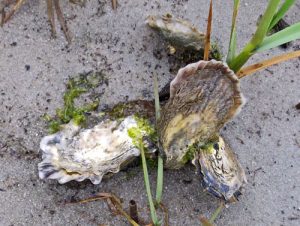
The National Oceanic and Atmospheric Administration (NOAA) Chesapeake Bay Office, along with the Chesapeake Bay Program (CBP), have released reports outlining the progress made by Maryland and Virginia in recent years to increase significant acreage of oyster reefs.
These multiagency efforts support the outcome outlined in the Chesapeake Bay Watershed Agreement, which seeks to continually increase finfish and shellfish habitat and water quality benefits from restored oyster populations, as well as to restore native oyster habitat and populations in 10 tributaries by 2025 and ensure their protection.
Maryland Summary Update
This is the sixth annual update on large-scale oyster restoration efforts in the state, which describes work in Harris Creek, the Little Choptank River, and the Tred Avon River.
Developed by the Maryland Oyster Restoration Interagency Workgroup, the summary report quantifies what was accomplished in the previous year, as well as cumulatively since work started in 2011:
In 2016, the initial phase of Harris Creek restoration was completed on the final 165 acres of oyster reefs.
A total of nearly 800 million oyster seed were planted in Harris Creek, the Little Choptank River and the Tred Avon River.
A significant science and monitoring program is under way on and near restoration sites, including research to quantify the ecological and economic benefits of restored oyster reefs, and detailed monitoring to track reef health.
The Maryland Oyster Advisory Commission is working on recommending the fourth and fifth tributaries.
Virginia Summary Update
This is the first year the three tributary-focused workgroups in Virginia that coordinate the planning and implementation for restoration in the Lafayette, Piankatank, and Lynnhaven rivers have compiled a report to summarize their work:
In the Lafayette River, the workgroup determined there are 70.5 acres that meet the definition of a restored reef, leaving 9.5 acres remaining to achieve the 80-acre restoration target.
In the Piankatank, 25 acres of reefs have been constructed since work started in 2014; the Piankatank workgroup is working to set a specific restoration goal.
In the Lynnhaven, 63 acres have already been restored. The workgroup is analyzing how much restorable bottom exists in order to set a restoration acreage goal.
The Great Wicomico and lower York rivers have been preliminarily selected to be Virginia’s fourth and fifth tributaries for restoration.
Funding for these oyster restoration projects comes from federal, state and local governments as well as nonprofit partners – all working to support goals of the Chesapeake Bay Program.
Facts
The Oyster outcome in the Chesapeake Bay Watershed Agreement seeks to continually increase finfish and shellfish habitat and water quality benefits from restored oyster populations. It also looks to restore native oyster habitat and populations in 10 tributaries by 2025 and ensure their protection.
Currently, six Chesapeake Bay tributaries have been selected for oyster restoration: Harris Creek, the Little Choptank, and Tred Avon rivers in Maryland, and the Lafayette, Lynnhaven, and Piankatank rivers in Virginia.
Each river is at a different level of progress that involves developing a tributary restoration plan, constructing and seeding reefs, and monitoring and evaluating restored reefs.
The last phase of this process – reef monitoring and evaluation – will determine success in meeting this outcome.
Leave a Reply
You must be logged in to post a comment.